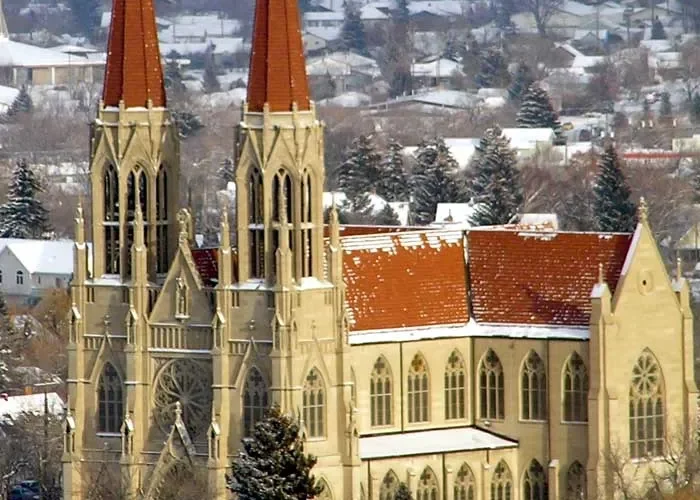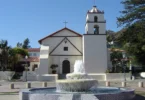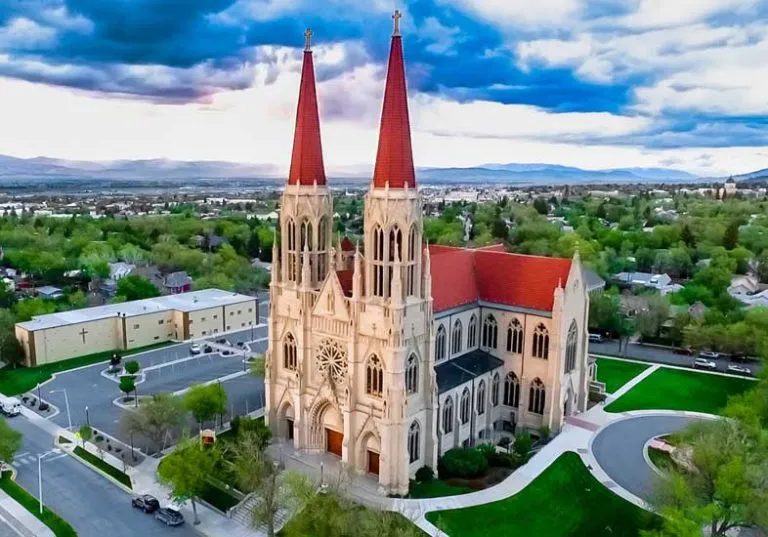
Introduction
The Cathedral of Saint Helena is the cathedral of the Roman Catholic Diocese of Helena, Montana. Modeled by architect A.O. Von Herbulis after the famous Votivkirche Church of the Sacred Heart in Vienna, Austria, the construction began on the cathedral in 1908, with the cornerstone laid on October 4. After six years, the community got together to celebrate the Eucharist for the first time in their new church on November 8, 1914, though the finishing touches weren’t put on the building until a decade later, in June of 1924.
Bishop John Patrick Carroll worked tirelessly to raise funds for building the cathedral and had an administrative role in management of the entire project. The cathedral sustained significant damage during the 1935 Helena earthquake, which required extensive renovations. The cathedral was added to the National Register of Historic Places in 1980.
A series of earthquakes hit Montana in 1935, and sections of the church were almost completely destroyed. Reconstruction was completed three years later, but that wasn’t the last time the church would be repaired. The cathedral was renovated again from 1982 to 1983, when many of the famous stained glass windows were touched up, and again from 1999 to 2000, when columns that had been damaged in a Montana Rail Link train crash 11 years earlier were repaired.
The windows were made and installed by the F. X. Zettler Firm of Munich, Bavaria. It took years to finish installing all of the church’s 59 windows, which were hand-crafted in Bavaria and shipped to Montana. Many of the windows are part of a series that tells the story of the church from the fall of Adam and Eve up through the early 20th century.
The Cathedral of St. Helena is enjoyed by residents, who appreciate its grandeur. The spires rise 230 feet above street level and can be seen from all points in the town. The church is noted for its artistic interior as much as for its impressive exterior. High, vaulted ceilings and hand-carved oak pews greet visitors to the church, who are also immediately struck by the tall pillars and striking lighting fixtures throughout.
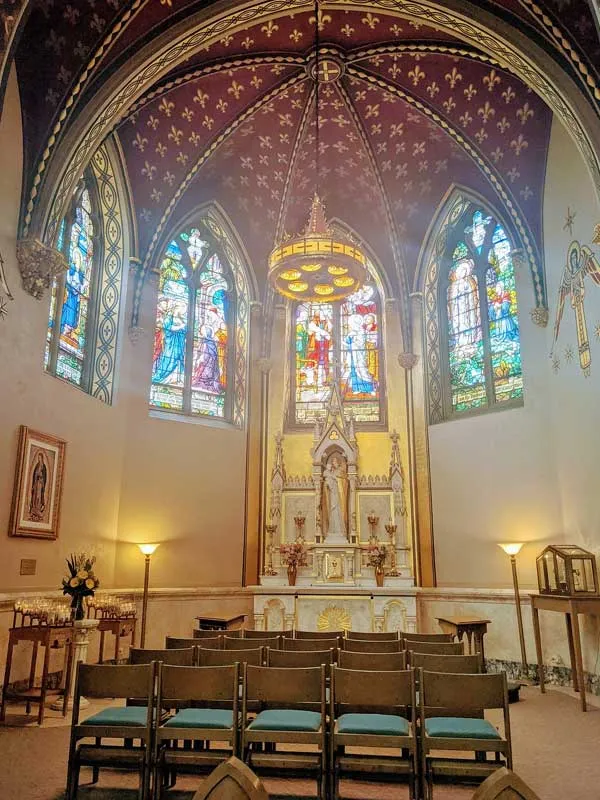
History of the Cathedral of Saint Helena
The sheer size of the Cathedral of Saint Helena makes it one of the most recognizable churches in Montana. With a vaulted ceiling and two large spires, it looms over the surrounding buildings, prominent in the Helena skyline. The large church is also the only gothic-style cathedral in the state, its distinct architecture known for attracting tourists.
With the cathedral’s remarkable architecture comes a remarkable amount of history. In 1905 the building site was chosen by Bishop John Carroll. The architect, A. O. Von Herbulis of Washington D.C., was selected due to his extensive knowledge of European cathedrals, and the Columbia Construction Company of New York was hired to see Von Herbulis’ vision through. The cornerstone of the cathedral was laid in October 1908 and in November 1914 Helena’s Catholic community gathered at the unfinished church to celebrate the Lord’s Supper for the first time.
The church was christened the “Cathedral of Saint Helena” after the mother of Roman Emperor Constantine the Great. According to tradition, Empress Helena (also referred to as “Helen”) travelled to Syria Palaestina, a Roman province in the Holy Land, to establish churches and set up relief agencies for the poor in the year 326. On her pilgrimage, she discovered three crosses that were believed to have been used in the crucifixion of Jesus and the two thieves. To test their authenticity, Empress Helena asked a dying woman to touch the crosses; she touched the first and second with no effect, but when she touched the third cross, her health was suddenly restored. Helena declared this cross to be the True Cross, the one upon which Jesus had hung. For this, the Catholic Church recognizes Helena as the patron saint of new discoveries.
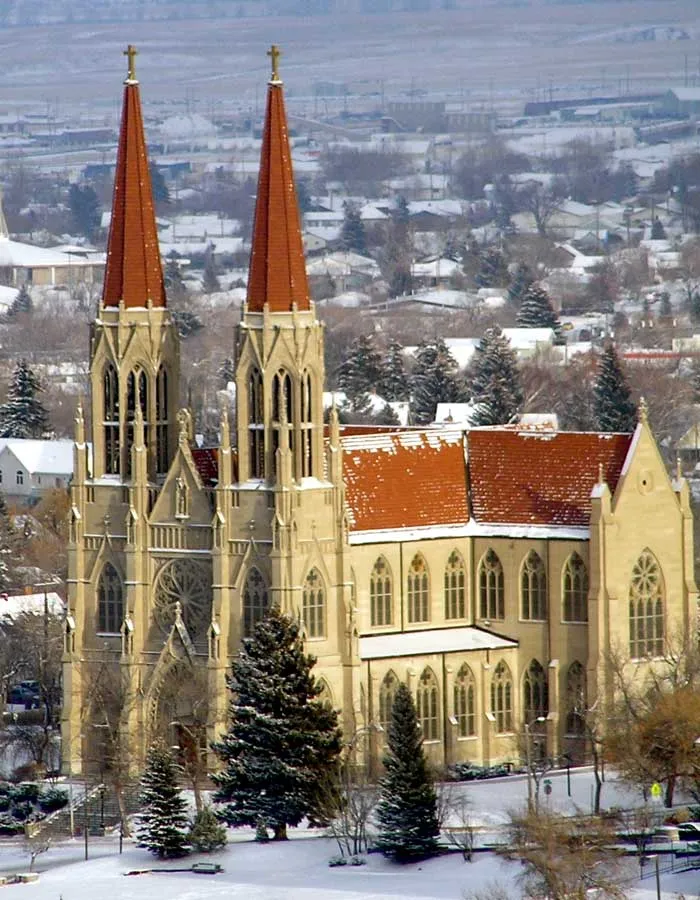
Saint Helena is credited with having discovered numerous sacred relics throughout her journeys, but perhaps her greatest contribution to Christianity was her influence over her son, Emperor Constantine. Constantine was swayed by his mother’s piety to become the first Roman emperor to convert to Christianity. Later, his role in the Edict of Milan brought about religious tolerance for Christians throughout the Roman Empire. This resulted in Christianity becoming more prevalent in Western society.
Given Saint Helena’s colorful history and considerable impact on Catholicism, it is unsurprising that the Cathedral of Saint Helena would choose to honor her as its namesake (although the cathedral’s location surely influenced that decision).
The Cathedral of Saint Helena’s construction was not completed until 1924, more than fifteen years after building had started; however, the impressive structure was worth the wait. White marble altars, hand carved oak pews, and dozens of stained glass windows contributed (and continue to contribute) to the church’s grandeur. It was a great shame then, when in 1935 a series of earthquakes struck Helena, damaging the cathedral. The south tower was almost completely destroyed and took several years to reconstruct.
Strong in its faith and its mission, the Cathedral of Saint Helena endured the catastrophe and has continued to serve Helena’s Catholic community to this day. The church also supports numerous organizations that help the poverty- stricken in Helena.
Among the many programs that the church upholds is the Good Samaritan Thrift Store. This Catholic charity provides services to meet the physical, social, emotional, and spiritual needs of individuals and families of all faiths. Its mission is to advance family life, human dignity, and the common good.
The church’s devotion to its fellow man, coupled with the building’s remarkable structure, make the Cathedral of Saint Helena both figuratively and literally a beacon in the community, one that continues to captivate believers and nonbelievers alike.
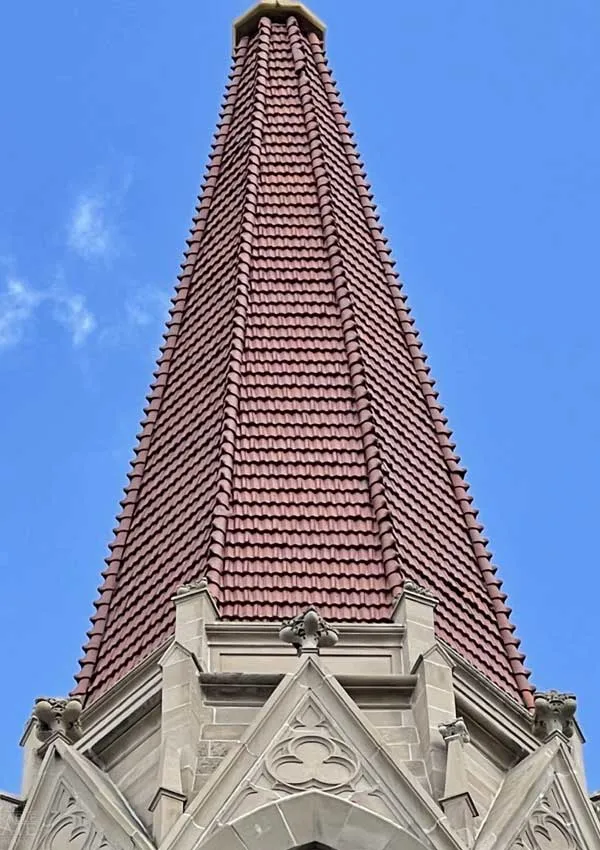
Architecture
Architectural style: Gothic Revival architecture.
The cathedral’s most prominent feature is its 230-foot (70 m) twin spires, which were directly inspired by the Votivkirche in Vienna. Adorning the spires are gold-leafed crosses that stand 12 feet (3.7 m) in height and 6 feet (1.8 m) in length. The cathedral’s North tower contains fifteen hand-cast bells, which represent the fifteen mysteries of the Rosary.
The interior of the cathedral boasts 11,693 square feet of stained glass across 59 windows, which depict various scenes from the Old and New Testament. The church’s limestone exterior also features 29 statues of saints and other figures.
The Cathedral of St. Helena was constructed at the turn of the century during the episcopate of Bishop John Carroll. It is an outstanding example of Geometric Gothic architecture, patterned after the Votive Church of the Sacred Heart in Vienna, Austria. Stained glass windows, white marble altars, statues carved of the purest Carrara marble, and genuine gold leaf decorates the sanctuary. The pews and woodwork are all done in hand carved oak. The magnificent lighting fixtures are of hand-forged bronze with a special lacquer finish. Outside, majestic twin spires rise 230 feet above the street.
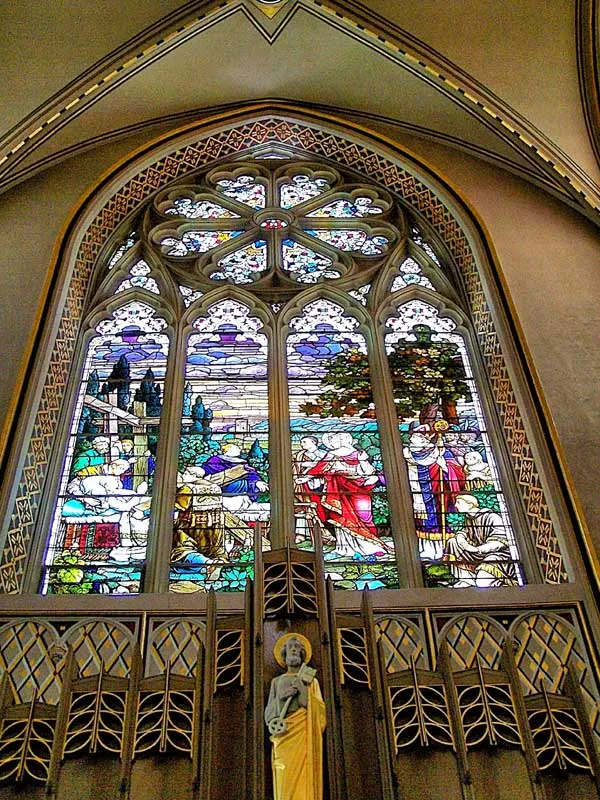
Construction of the Cathedral
The site for the cathedral was purchased with a $25,000 donation from Thomas Cruse in 1905. A.O. Von Herbulis of Washington, D.C., was commissioned as the architect. Von Herbulis was trained abroad and was chosen for his knowledge of the cathedrals of Europe. Rough sketches were prepared in two styles, Romanesque and Gothic. When the drawings were presented, the Building Committee chose the Gothic form; a motion to authorize that design passed unanimously. Von Herbulis modelled the cathedral after the Votivkirche in Vienna, Austria, which he had become familiar with while studying at university in Vienna.
The Columbia Construction Company of New York City began construction of the cathedral in 1908; the cornerstone was laid on October 4 that year. On November 8, 1914, the Catholic community of Helena gathered to celebrate Mass for the first time in the new church, and the first funeral held in the cathedral was that of Thomas Cruse, a benefactor, December 26, 1914. The cathedral remained under construction for ten more years; in June 1924, the cathedral was consecrated.
The stained glass windows for the cathedral were made and installed by the F.X. Zettler Firm of Munich, Germany. By the time the cathedral was dedicated, 46 of the planned 59 windows had been installed. The Zettler Firm claimed that the 37-window set, which told the Christian story from the fall of Adam and Eve to the Church in the early years of the 20th century, surpassed any windows which it had made during its first 50 years. The remaining windows in the clerestory level were installed by 1926 by Charles J. Connick, a craftsman from Boston.
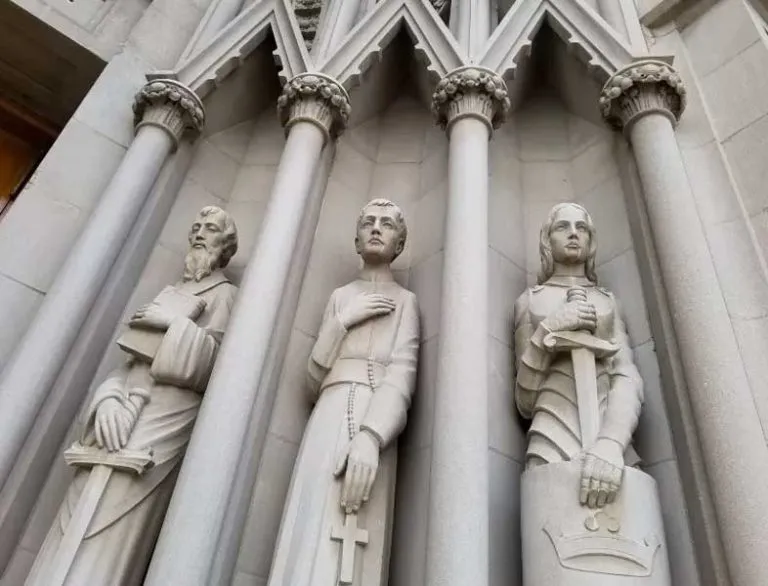
Renovations
In the fall of 1935, a series of earthquakes struck the State of Montana. The cathedral suffered damage: the south tower was almost completely destroyed. The tower was reconstructed and reinforced to prevent future calamity. The reconstruction was completed by 1938.
The interior of the cathedral remained unchanged from its dedication until the mid-1950s. Under the direction of Bishop Joseph M. Gilmore, the bronze altar canopy was installed. The grillwork behind the altar and the gilding of the interior were also added. The restoration was completed in April 1959 in time for the golden jubilee of the cathedral and the 75th anniversary of the Diocese of Helena.
The cathedral was renovated in 1982-1983 under the direction of Bishop Elden F. Curtiss. This renovation addressed the liturgical reform of the Second Vatican Council. Extensive repairs to the stained glass windows were also undertaken by the late Fr. Daniel Hillen.
In 1999-2000 repairs to the interior columns were completed. The columns had been damaged in the Montana Rail Link train crash of February 1989.
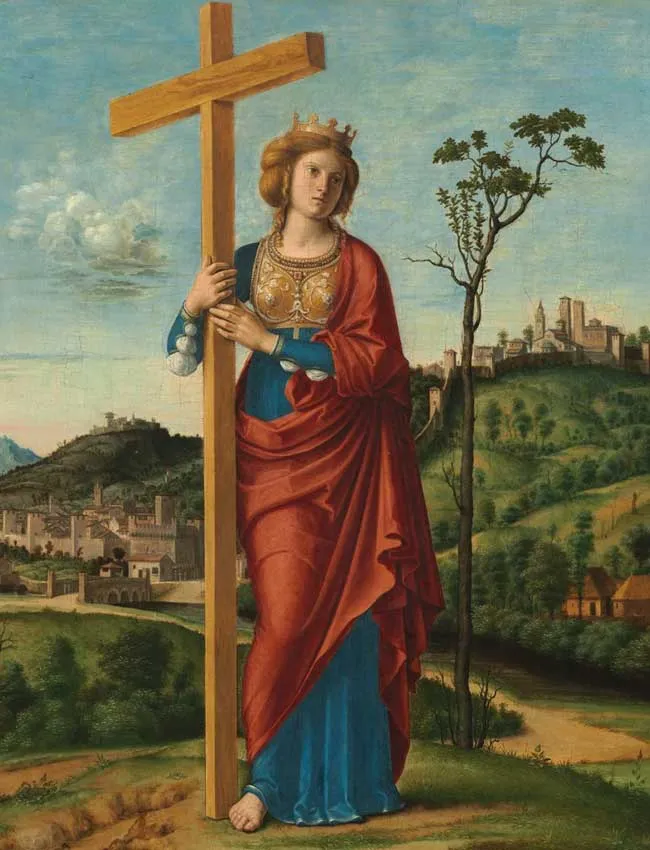
The most recent renovation of the cathedral, begun in 2002 under the direction of Bishop Robert C. Morlino, continues under Bishop George Leo Thomas. Both the upper and lower levels of the cathedral were renovated. The lower level was completely remodeled to include two new social halls and a complete kitchen. The lower level was named in honor of the first bishop of Helena, John B. Brondel. The upper-level renovation included the sanctuary, Saint Joseph’s Chapel, new baptistry, and the installation of the elevator in the north transept for improved access between levels.
Physical plant enhancements include a new heating system, a renovated chime system, a renovated and enhanced pipe organ, the restoration of the stained glass and re-covering of their exterior surfaces, the installation of a new sound system, the construction of a new confessional, the removal of the old St. Helena Grade School, the construction and landscaping of a new main parking lot, and the exterior upgrade to the Faith Formation/Office building.
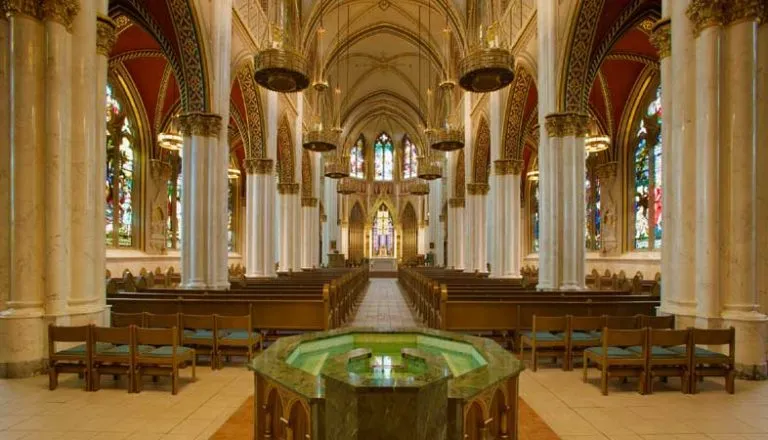
Feast Day – 18th August
Solemnity of St. Helena! – August 18th, St. Helena, also called Helen, (born c. 248, Drepanon, Bithynia, Asia Minor – died c. 328, Nicomedia; Western feast day August 18; Eastern feast day [with Constantine] May 21), Roman empress who was the reputed discoverer of Christ’s cross.
Helena was married to the Roman emperor Constantius I Chlorus, who renounced her for political reasons. When her son Constantine I the Great became emperor at York in 306, he made her empress dowager, and under his influence she later became a Christian. She was devoted to her eldest grandson, Crispus Caesar, whom Constantine made titular ruler of Gaul, but a mysterious embroilment in the imperial family culminated with the execution of Crispus and Fausta, Constantine’s second wife and Crispus’s stepmother. Thereafter, the story became current that Fausta had accused Crispus of attempting to seduce her—hence Crispus’s execution in 326. Fausta, in turn, was denounced by the grief-stricken Helena and was executed shortly afterward. The historicity of that explanation remains questionable. Immediately after the double tragedy, Helena made a pilgrimage to the Holy Land. She caused churches to be built on the reputed sites of Christ’s Nativity (in Bethlehem) and Ascension (near Jerusalem).
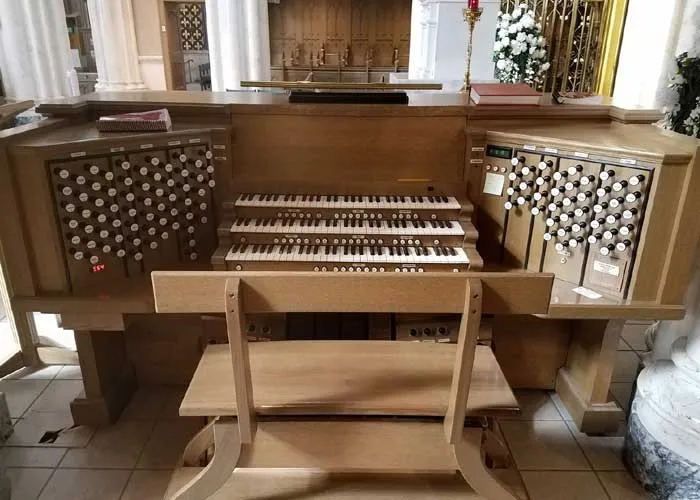
Mass Time
Weekdays
Saturdays
Sundays
Church Visiting Time
Contact Info
Cathedral of Saint Helena,
530 N, Ewing Street, Helena,
Montana, MT 59601, United States
Phone No.
Tel : +1 406-442-5825
Accommodations
How to reach the Cathedral
Helena Regional Airport in Helena, Montana, United States is the nearby Airport to the Cathedral.
West Glacier – Montana Train Station in Montana, United States is the nearby Train Station to the Cathedral.

